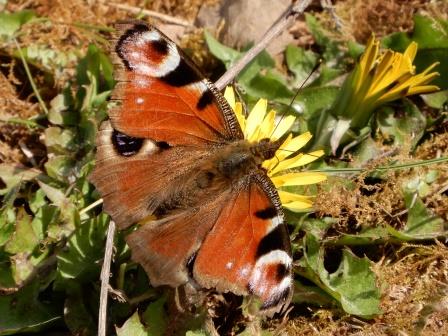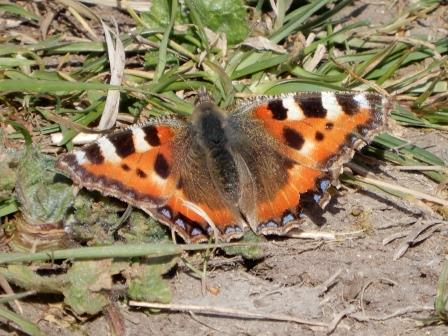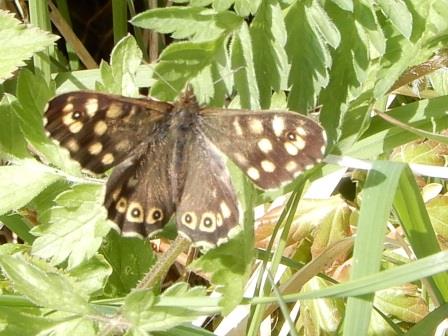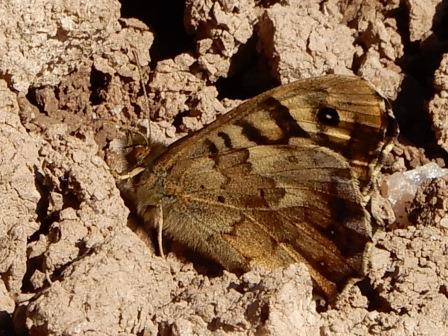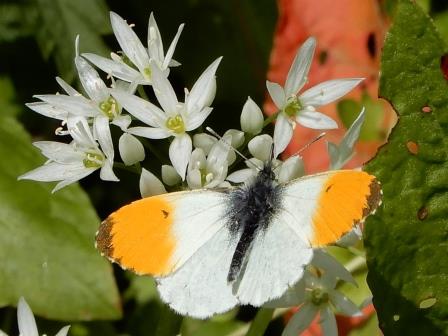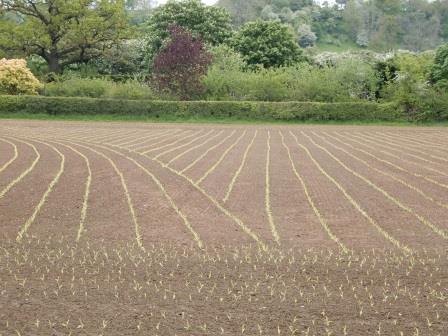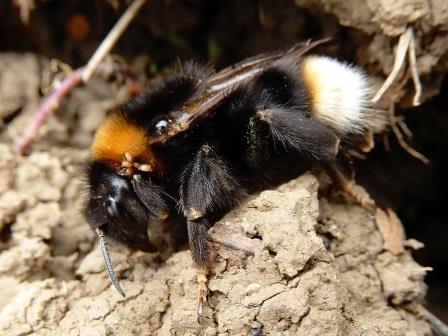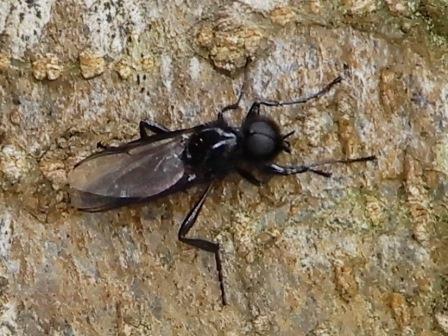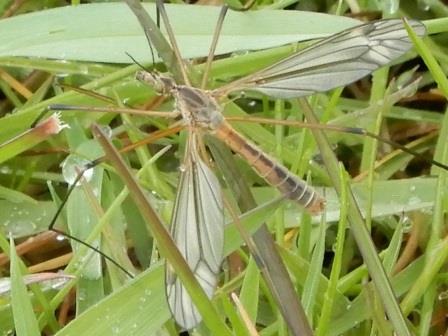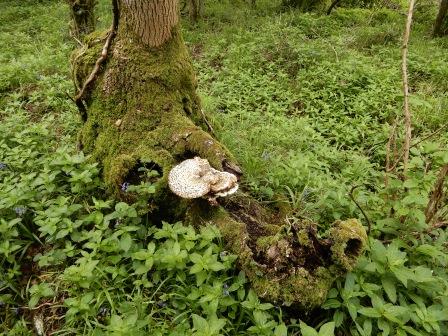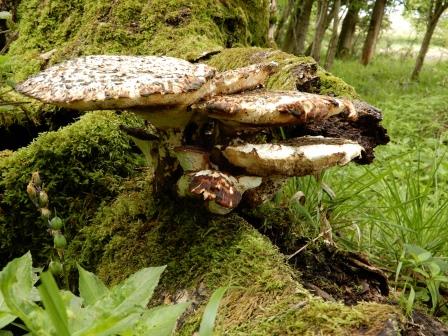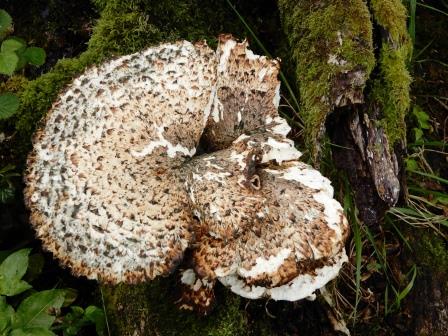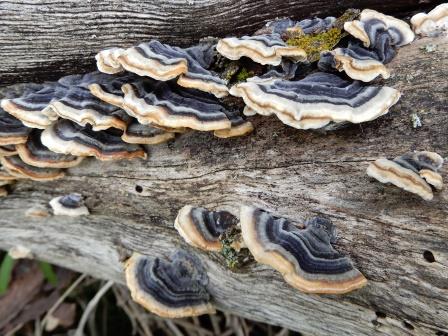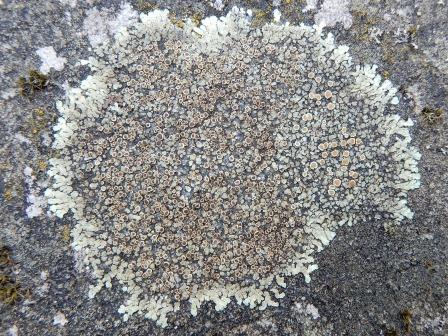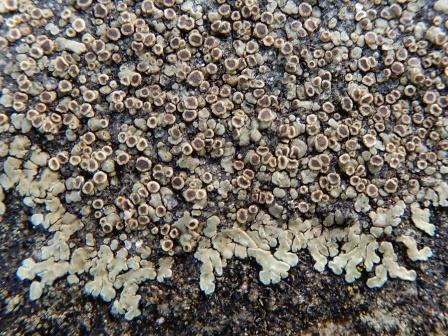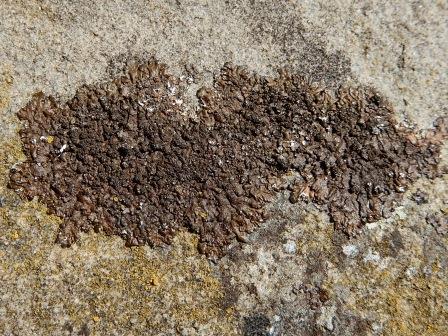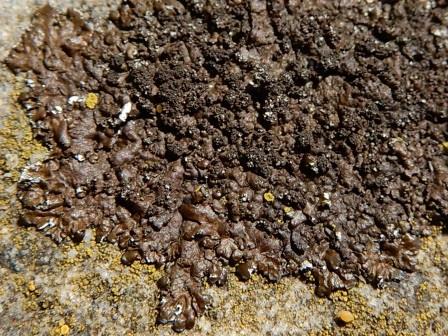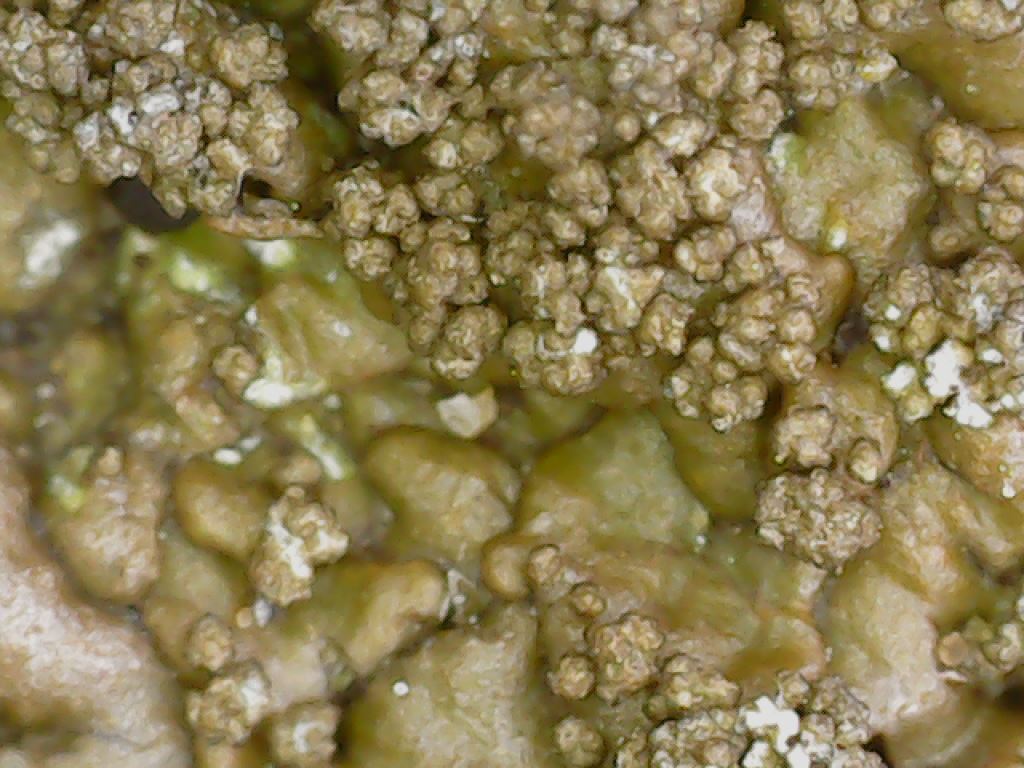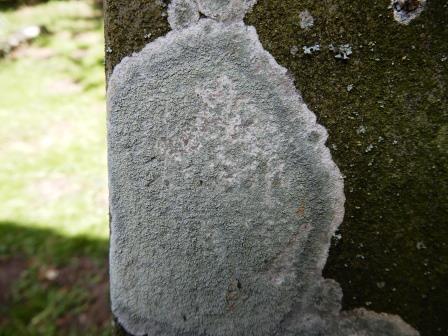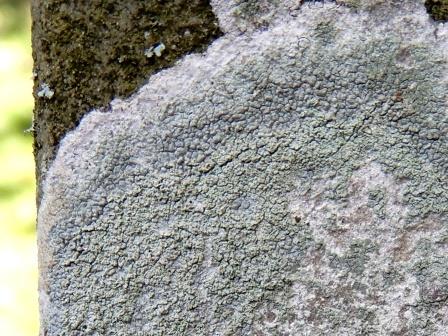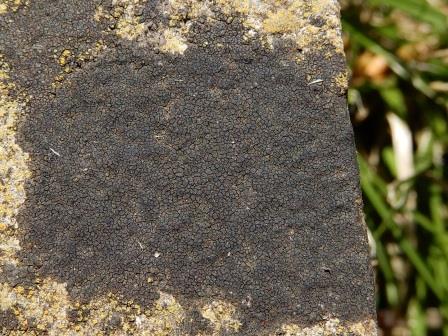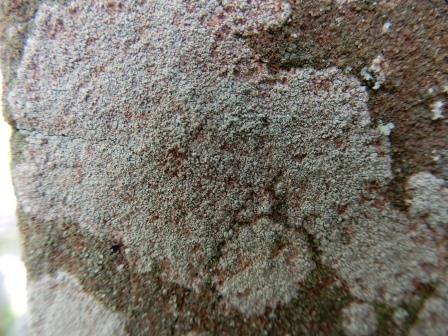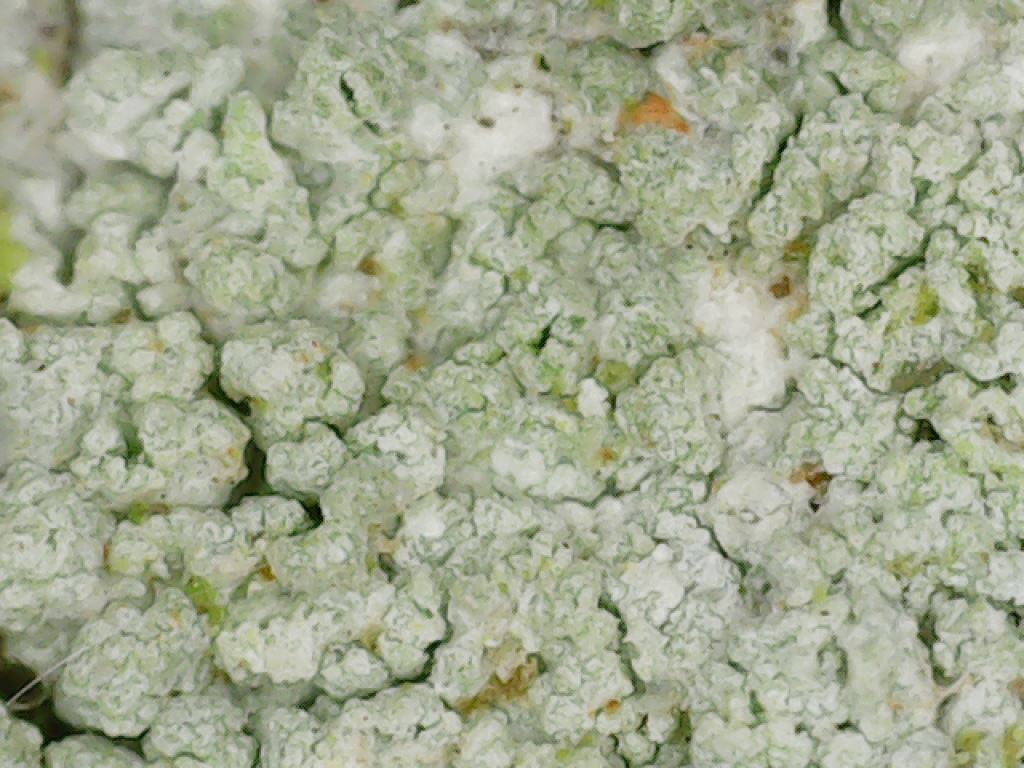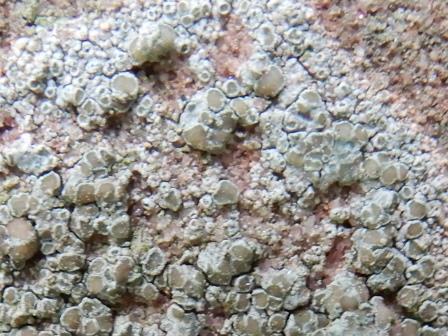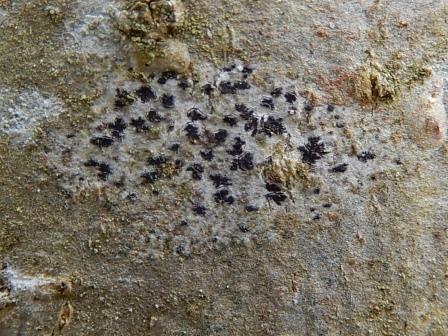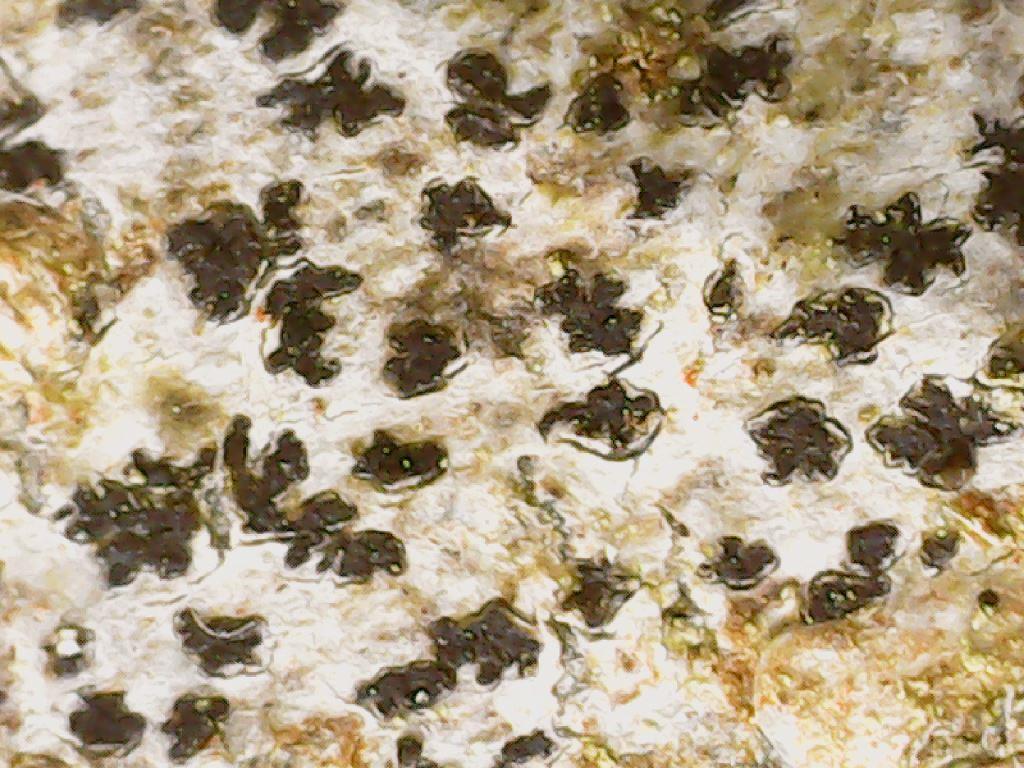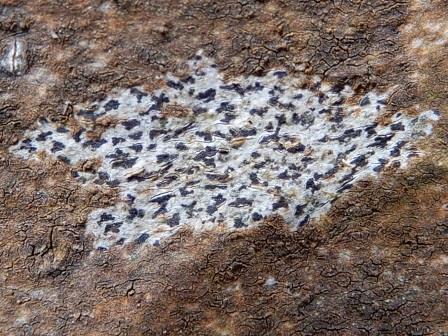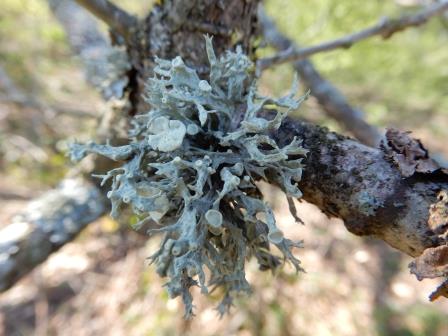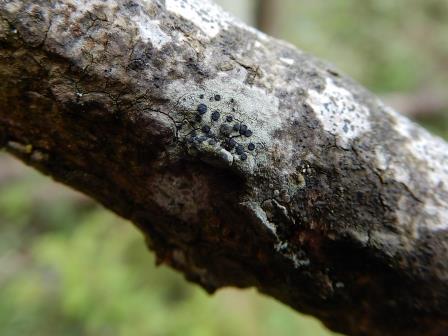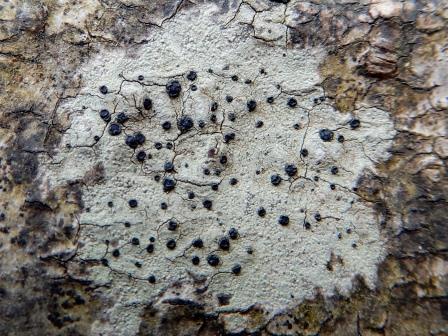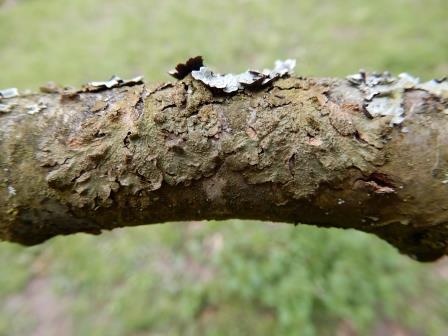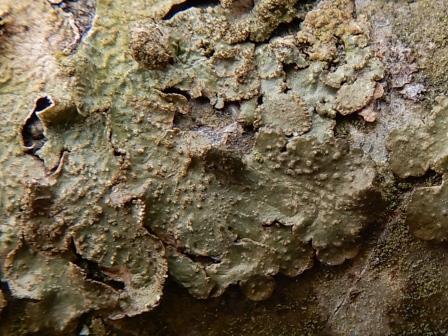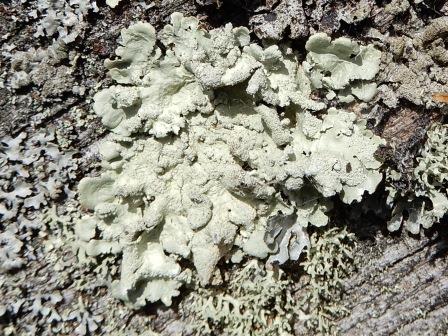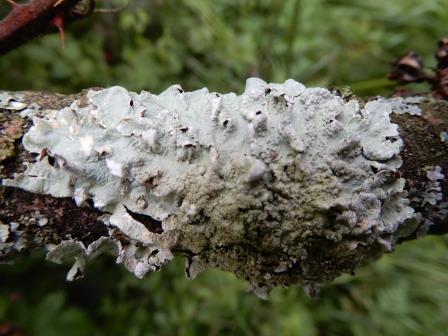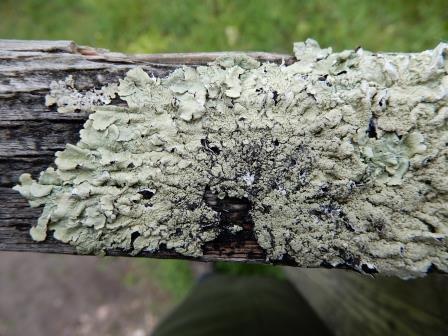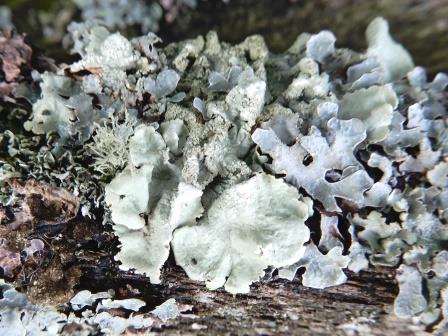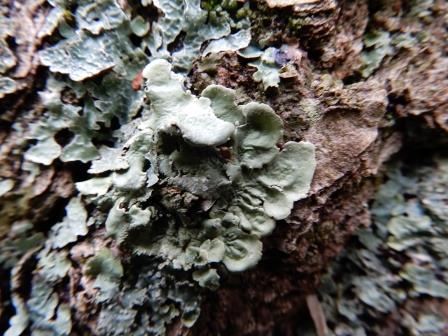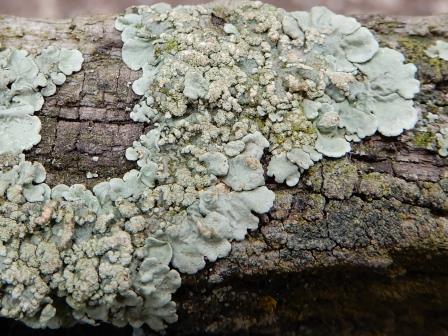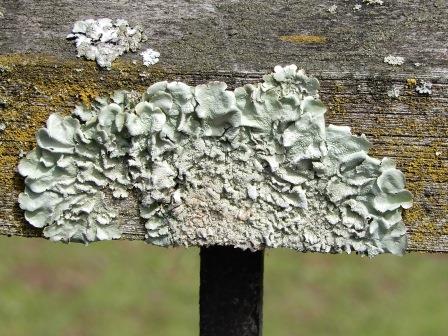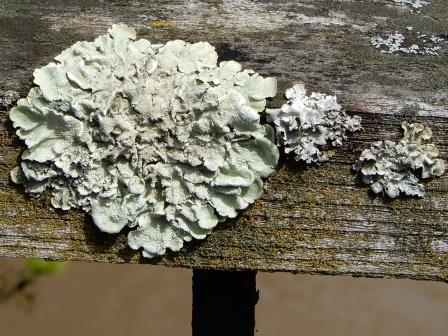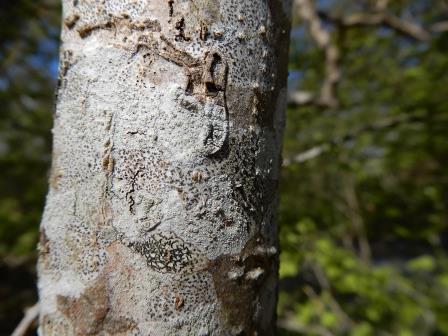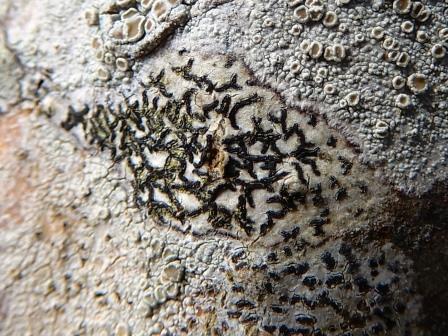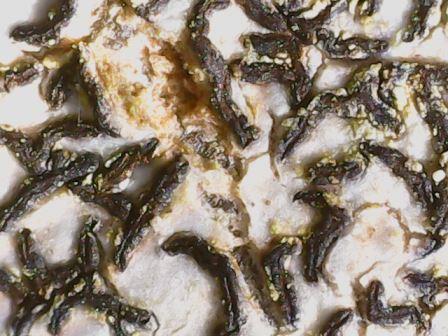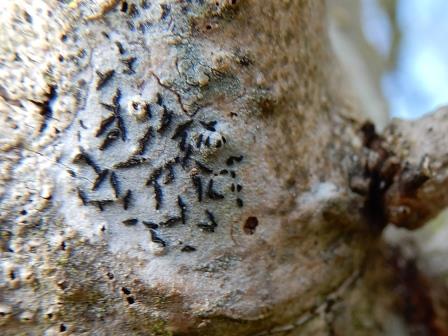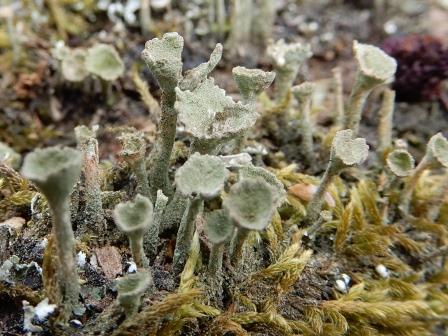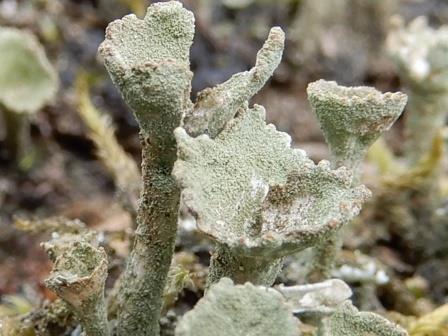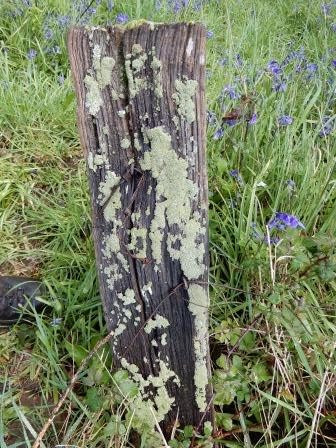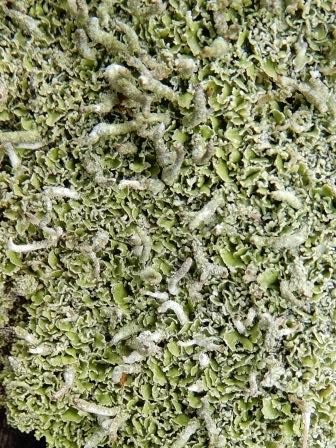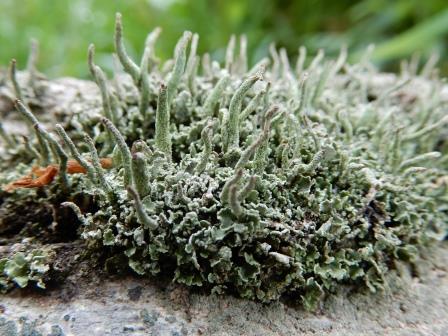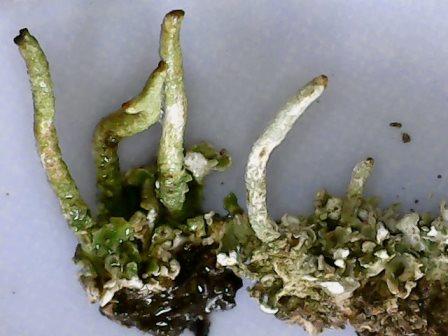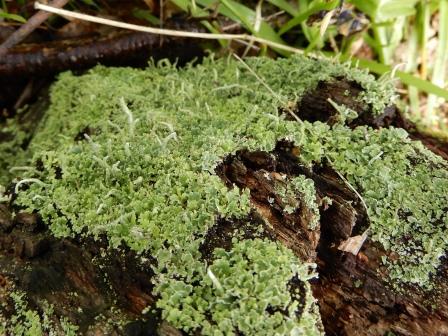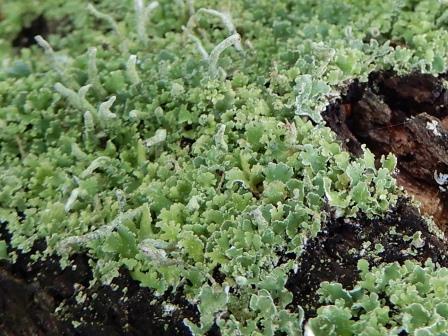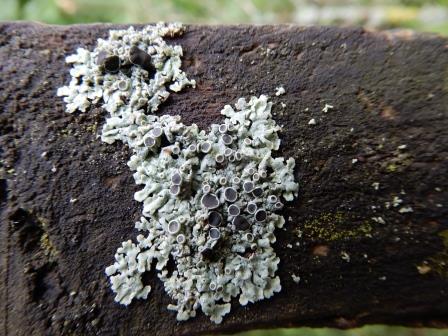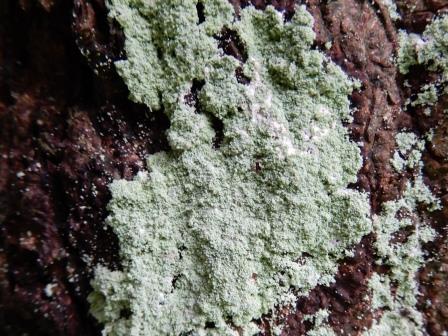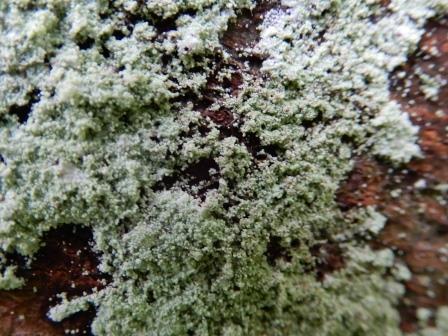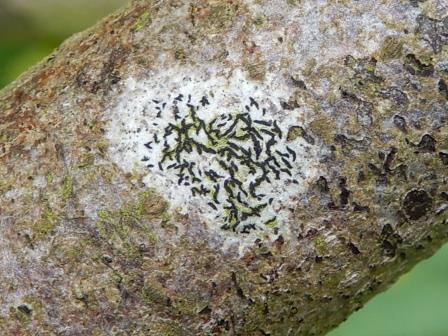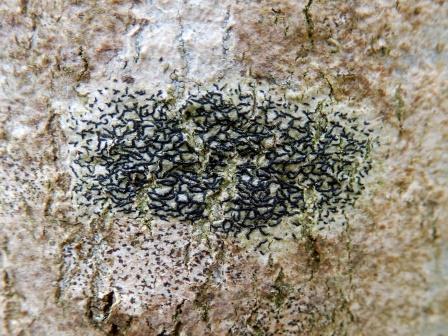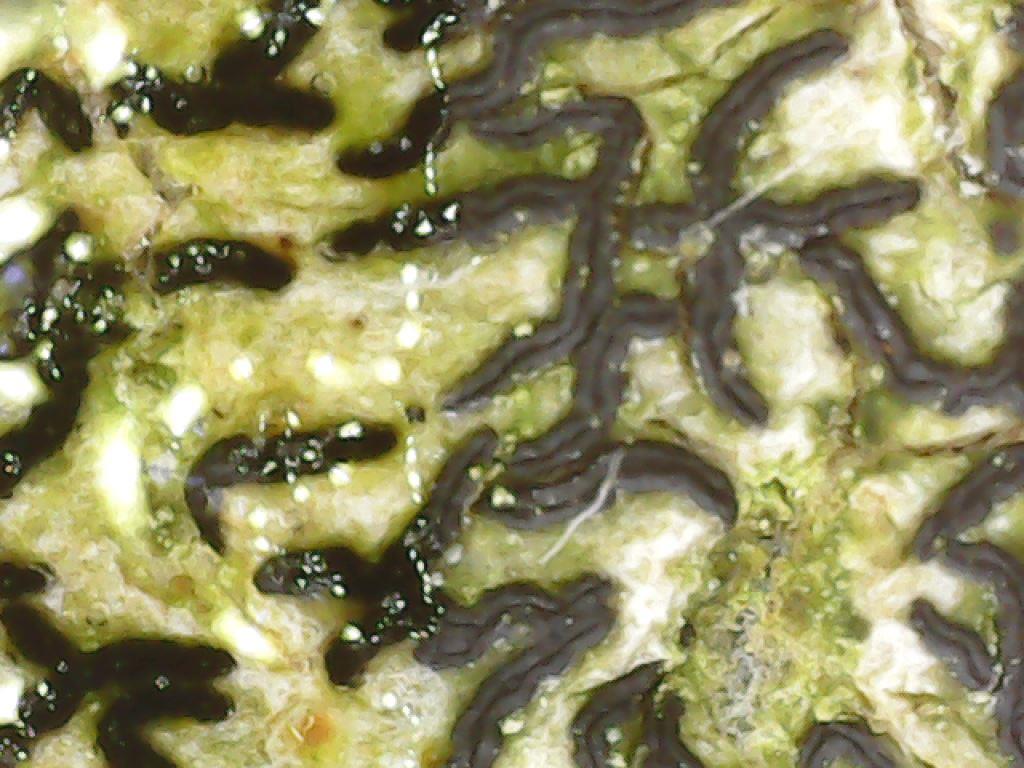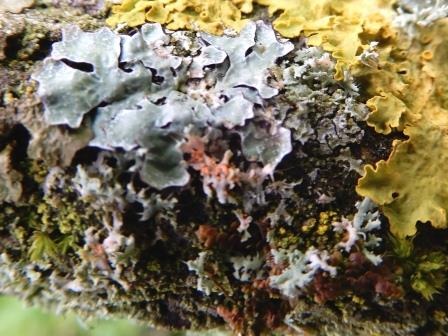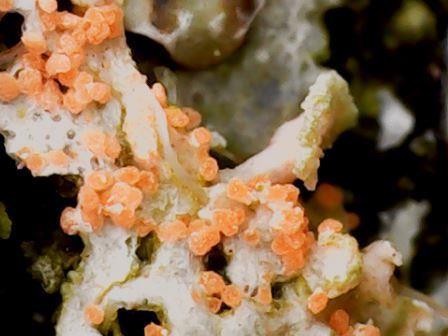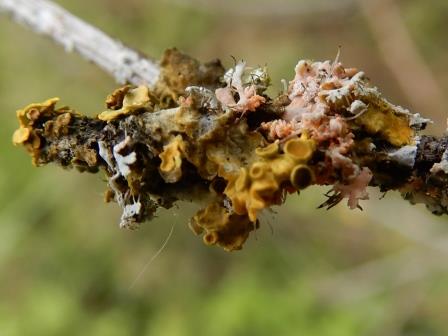Please refer to the Introduction Page to understand the context behind the monthly photographs.
Small Tortoiseshell Butterfly
Crop pattern in field - probably sown by GPS system ?.
Tree Bumble Bee (Bombus hypnorum)
The Tree Bumble Bee (Bombus hypnorum) is one of the less common bumble bees. It was first recorded in the UK in 2001 in Hampshire. Now can be found from southern England to as far north as Aberdeenshire. The Queens fly from March and the workers and males from May.
St Mark's Fly (Bibio marci)
Cranefly (Tipula vernalis)
St Mark's fly - Although harmless these all black flies drift over vegetation with their legs dangling which appears a little sinister. They appear April-May around St Marks Day the 25th April.
Dryad's Saddle
(Polyporus squamosus)
Dryad's Saddle
(Polyporus squamosus)
Dryad's Saddle
(Polyporus squamosus)
Many-zoned Polypore (Coriolus versicolor)
Lichen are only recorded at each new OS Grid location (hover for Grid Ref). They are then entered on the British Lichen Society spreadsheet and submitted for their Warwickshire VC38 Lichen database and Lichen mapping.
Churchyard lichens - St Mary Magdalen Church - Great Alne
The story of St Mary’s goes back to Saxon times. The original church building probably suffered during William the Conqueror’s Harrying of the North activities, and consequently became a rectory in the patronage of the Treasurer of York Cathedral (who also was Lord of Alne). Hence the current church is primarily of the Norman period, with alterations and additions over the centuries.
Lecanora muralis - Close up
Xanthoparmelia verruculifera
Xanthoparmelia verruculifera
Xanthoparmelia verruculifera - Digital Microscope close up
Churchyard lichens - St Mary the Virgin Church - Kinwarton
A Grade II* listed building largely rebuilt c.1316 ; turret C16 or C17. Restored 1850. Limestone and lias, rubble and irregular coursed stone. Old tile roofs; weatherboarded turret with pyramid shingle roof.
Haematomma ochroleucum var. porphyrium
Haematomma ochroleucum var. porphyrium - Close up
Usually Phlyctis argena is found on trees and only rarely on basic stone which was a pink/red sandstone pedestal cross in the case below. The same applies to the photograph of Lecanora hybocarpa (L. chlarotera agg.) also on the same sandstone.
Phlyctis argena - Close up 1
Lecanora hybocarpa (L. chlarotera agg.)
Arthonia radiata - With digital microscope
Arthonia radiata - Different location
Lecidella elaeochroma - Close up
Melanelixia subaurifera - Close up
Melanelixia subaurifera - Different location
Opegrapha atra - Digital microscope close up
Flavoparmelia caperata - Different location
Flavoparmelia caperata - Different location
Flavoparmelia caperata - Another location
Flavoparmelia caperata - Different location
Flavoparmelia caperata - Another location
Flavoparmelia caperata - Another location
Flavoparmelia caperata - Different location
Graphis scripta - With digital microscope
Graphis scripta - On same tree
Cladonia fimbriata -Close up
Cladonia coniocraea (damp)
Cladonia coniocraea - Close up
Cladonia coniocraea Different location
Cladonia coniocraea wet (on left) and dry (on right)
Cladonia coniocraea - Another location after rain
Cladonia coniocraea - Close up after rain
Physcia aipolia - Another location
Lepraria finkii - Close up
Graphis scripta - Another location
Graphis scripta - Digital microscope close up
Graphis scripta - Another location
Graphis scripta - Digital microscope close up
Erythricium aurantiacum on Physcia tenella
Erythricium aurantiacum - Digital microscope close up
Erythricium aurantiacum on Physcia tenella - Different location
Ones that escaped the camera lens this month
a) A muntjac deer.
b) Roe hind and young.
Page Views starting March 2022: 497
